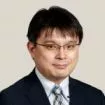I. Introduction
Each country has its own patent practice. The Japanese patent practice also has some unique aspects. The purpose of this article is to provide you with easy-to-understand notes regarding the aspects of the patent practices which may be unique in Japan.
II. Patentable Subject Matter
A. Methods of Surgery, Therapy, or Diagnosis of Humans
Under Japanese patent practice, methods of surgery, therapy, or diagnosis of humans are not patentable.
However, the reality is that the determination made by the JPO regarding whether a claimed invention falls into this category is not always clear. Thus, it may be possible to obtain a patent by carefully selecting the wording in a claim without modifications on the substantial aspects of the claimed invention while considering the following table which summarizes some of the examples cited in the JPO Examination Guidelines.
| Examples of "methods of surgery, therapy or diagnosis of humans" | Not examples of "methods of surgery, therapy or diagnosis of humans" |
| Method of treating an affected area with a micro-surgical robot | Method of controlling the operation of a micro-surgical robot |
| Method of sampling body fluid | Method of controlling the operation of a device for sampling body fluid |
| Method of regeneration of cartilage | Implant material for cartilage regeneration |
| Method of treating myocardial infarction | Composition for treating myocardial infarction |
| Method of gene therapy | Manufacturing method of a cell product for gene therapy |
| Method of X-ray CT imaging | Method of controlling the operation of an X-ray CT imaging device |
B. Software Related Inventions
For software such as computer programs to be considered an "invention" under the Japanese Patent Law, information processing by the software needs to be specifically performed using hardware resources. The claims will therefore need to clearly describe how information processing by a computer program is performed using hardware resources, such as CPU, memory, etc.
The description of the hardware in a device claim and the clarification of the hardware which performs the operation of the steps included in the method claim are often required at a more specific level in Japan than in the U.S. and EP.
Artificial arrangements and human mental activities do not meet the patent eligibility because they do not apply to laws of nature. Therefore, applicants should clarify the hardware which performs each step. Even if some steps are performed by humans, the invention meets the patent eligibility if the entirety of the invention is deemed to utilize laws of nature.
III. Drafting Patent Applications
A. Claims
If you file a Japanese patent application based on an English text, you should be careful about the Japanese translation of the English text, in particular the Japanese wording for transition phrases such as "comprising" in a claim of the Japanese patent application.
If the Japanese term 含む is used for "comprising" in a claim, the claim will be interpreted by the Japanese courts as an open claim. On the other hand, if the term からなる is used for "comprising", it is unclear whether the claim would be interpreted as an open claim. A thorough check of the Japanese wording in a claim is recommended.
B. Specification
Under the Japanese patent practice, the quality of the specification of a Japanese patent application can be a key issue at various events.
Thus, for example, the effects of a claimed invention should be carefully described in the specification.
Please assume that you are arguing inventive step of a claimed invention during the examination of a Japanese patent application by asserting the effects of the claimed invention.
The JPO would take into consideration the asserted effects of the claimed invention as long as they are described in the specification or are obvious from the descriptions in the specification.
However, if the asserted effects are not described or not obvious from the specification, the JPO would not take them into consideration.
Accordingly, though not mandatory, describing the effects of a claimed invention in a specification is highly recommended as it may become essential in the future when asserting the inventive step of the claimed invention.
IV. Response to Office Actions
A. Recent Trend
At present, the JPO is not strict about the examination of patentability. In fact, the grant rate of Japanese patent applications is, at present, very high (more than 70%). Thus, we believe that now is a good time to file patent applications in Japan.
B. New Matter Practice
In general, new matter practice in Japan is stricter than that in the US, but is more lenient than that in Europe.
The features of the Japanese new matter practice may be summarized as follows.
| Amendments adding matters described explicitly in the specification as filed | allowable |
| Amendments adding matters not described explicitly in the specification as filed but are equivalent to being described in the specification as filed in view of common technical knowledge | allowable |
It should be noted that adding a disclaimer such as "the
composition does not comprise an ingredient A" into a claim
is, in general, allowable even if the specification does not have
any basis of the disclaimer. Furthermore, adding a disclaimer into
a claim is possible, regardless of whether it is to establish
novelty. Thus, for example, a disclaimer can be used to establish
even inventive step of a claimed invention by adding it to the
claim to exclude any essential element of relevant prior art from
the scope of the claim.
C. Response to Examiner based on Descriptions in Specification
Arguments which are available under the European and US patent practice would also be available in Japan as well to argue inventive step of a claimed invention. For example, the "problem-solution approach" in Europe and "teach-away arguments" in the US would also be useful in Japan.
The important point under Japanese patent practice is that inventive step arguments should be based on the descriptions in the specification. For example, inventive step arguments would be ignored by the JPO Examiner if they are based on the effects of a claimed invention which are not described in a specification.
It should also be noted that, although the submission of a Declaration or Affidavit is recommended when submitting experimental data, it is not mandatory during prosecution. Based on our experience, during prosecution, the JPO takes into consideration experimental data which are submitted without a Declaration or Affidavit.
V. Opposition and Invalidation Trial
In Japan, there are two systems to challenge the validity of a third party's patent. One is an Opposition, and the other is an Invalidation Trial. Both are procedures before the JPO. In other words, the invalidation "trial" is not a court proceeding.
The features of the oppositions and invalidation trials may be summarized as follows.
| Opposition | Invalidation Trial | |
| Reasons to be asserted | Relatively few reasons of revocation. | A variety of reasons of revocation |
| Who can request? | Anyone | Interested party |
| Time limit of request | Within six months after the issuance of a granted patent | No time limit |
| Duration length | 7.4 months | 12.5 months |
| Success rate | (No official data) | About 32% *1 |
| Who can appeal? | Only patentee | Losing party |
| Points | The Opposition in Japan is, in general, a
re-examination. Therefore, discussions are made, in general, between a patentee and the JPO in writing. The costs for an Opposition tend to be relatively low. |
The invalidation trials are inter-parte
proceedings. Therefore, discussions are made, in general, between a patentee and an invalidation trial requester. The costs for an invalidation trial tend to be relatively high. |
| Official fee | 16,500 JPY + 2,400 JPY x number of claims | 49,500 JPY + 5,500 JPY x number of claims |
*1 This rate is calculated based on invalidation trials in which all claims or a part of claims are invalidated in 2020.
Since Japan is now implementing pro-patent policies, it may not be easy to revoke a patent.
However, the chance of success in invalidation trial may be higher than that in opposition, because the invalidation trial requester can directly participate in the discussion regarding validity.
Based on the above features of the both systems, it may be advisable to select oppositions or invalidation trials, in consideration of the following:
A. Oppositions may be suitable
- If you do not wish to disclose your name (since an opposition can be filed by anyone including a "strawman")
- If you have a limited budget.
B. Invalidation trials may be suitable
- If you are sued for patent infringement litigation before the Japanese court
- If you find prior art after the time limit for filing an opposition.
VI. Patent Term Extension System
There are two patent term extension (PTE) systems in Japan. One is to compensate for the delay in examination by the JPO of Japanese patent applications, and the other is to compensate for the limitation by regulatory issues for medicinal or agrichemical patents in Japan.
A. Compensation for Delay in Examination
If Japanese patent applications filed on or after March 10, 2020 are allowed 5 years after filing or 3 years after requesting examination (whichever is later), they may be extended by filing a request for PTE.
However, it should be noted that the period for responding to Office Action(s), the period(s) for time extension(s) for responding to Office Action(s), the period of appeal, etc., are subtracted from the extension.
As the JPO rarely makes delays in examination, the number of cases for which PTE is possible under this system may be limited.
B. Compensation for Limitation by Regulatory Issues for Medicinal or Agrichemical Patents
The features of the PTE system for medicinal or agrichemical patents in Japan may be summarized as follows.
| Maximum Period of Extension | Five years |
| Number of Possible Extensions for a Single Patent | No limitation |
| If multiple patents are related to a single marketing approval | All the patents are extendible |
| Inventions for which PTE is available | Compounds Combinations of compounds Compositions (formulation) New usages of compound(s) Methods for preparing compound(s) or composition(s) |
| Time Limits for Filing PTE Applications | Within three months from receiving marketing approval, and no later than the end of the original patent term. |
| Extension Period | The shorter of the following two periods: (1) From the registration of a patent to the marketing approval by the Japanese regulatory authority (2) From the start of clinical trials to the marketing approval by the Japanese regulatory authority |
One major feature in the Japanese PTE system for medicinal or
agrichemical patents is that two or more PTEs may be allowable for
a single patent if multiple marketing approvals are obtained.
Moreover, two or more patents may be extended based on a single
marketing approval if the multiple patents relate to the single
marketing approval. In any case, the extension for a patent right
based on a marketing approval cannot exceed five years.
VII. Comments
The above notes are directed to some aspects of the patent practice which may be unique in Japan. It is not easy to cover all unique aspects of Japanese patent practice. If you have any specific questions about Japanese patent practice, please contact your Japanese agents. Of course, if you contact us, we would be pleased to answer your questions.
The content of this article is intended to provide a general guide to the subject matter. Specialist advice should be sought about your specific circumstances.

